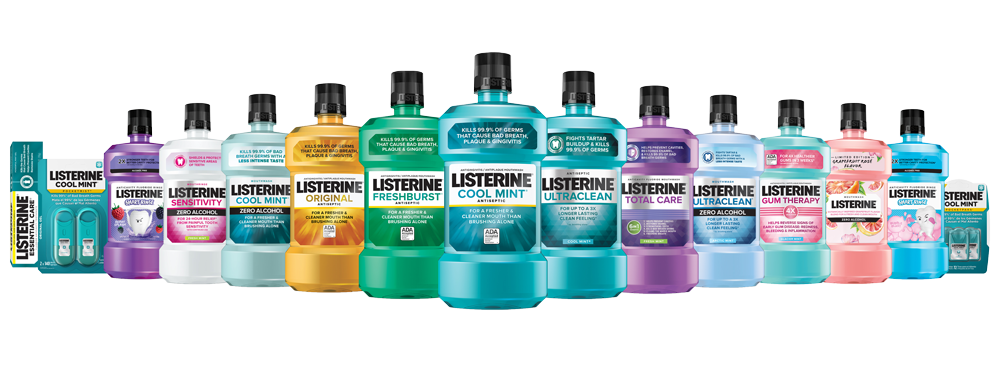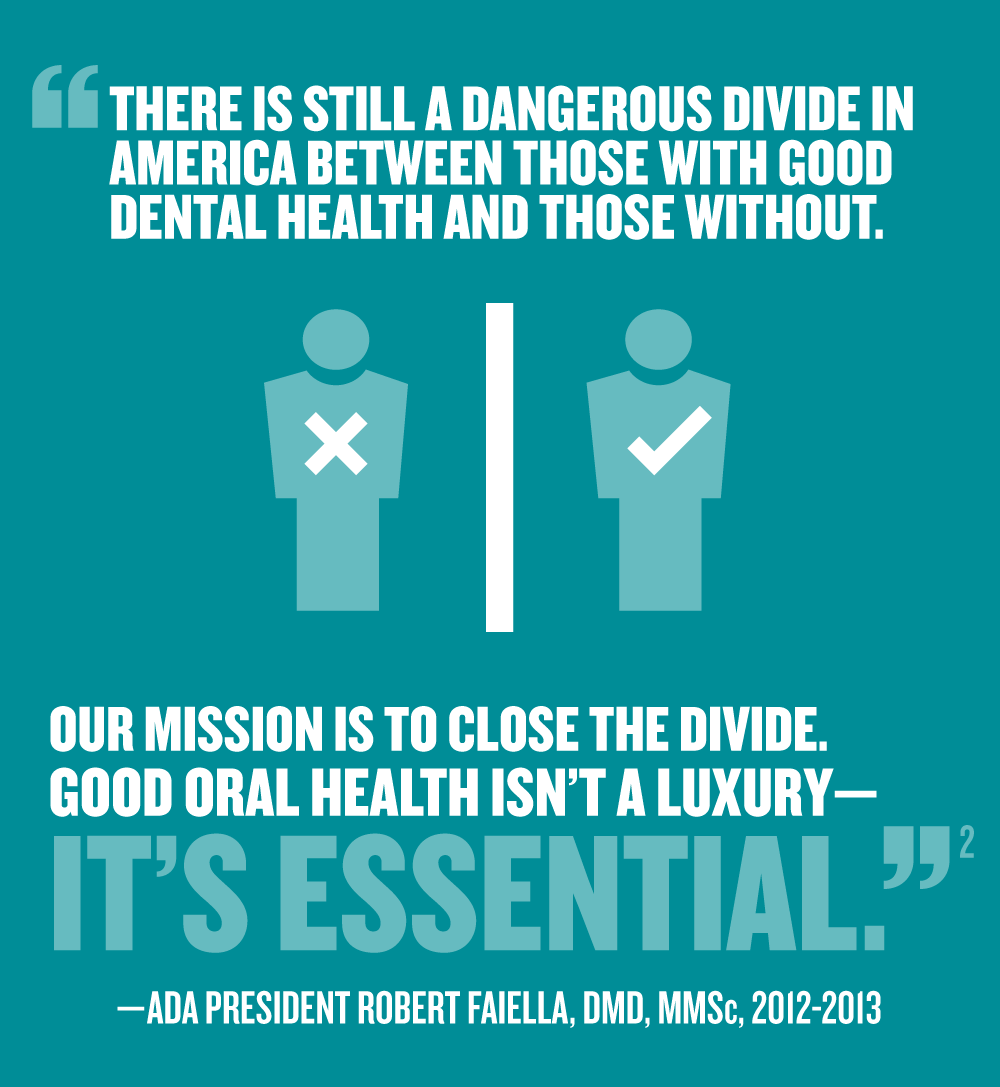

Licensed professionals can receive the latest Listerine clinical information and patient resources.
ADA ORAL CARE INITIATIVE IS BRINGING DISEASE PREVENTION INTO COMMUNITIES
“America is in a dental health crisis,” according to the American Dental Association (ADA). The facts certainly bear this out:
- 181 million Americans didn’t visit a dentist in 20101
- Nearly half of lower income adults reported they have not seen a dentist in a year or more2
- Nearly half of adults over age 30 suffer from some form of gum disease1
- Poor Americans are more than 2 times as likely to be toothless than their wealthier counterparts2
- Nearly 1 in 4 children under the age of 5 already has cavities1
Taking action for dental health
In response to statistics like these, the American Dental Association (ADA) developed Action for Dental Health (ADH): Dentists Making a Difference—a nationwide, community-based movement aimed at ending the dental health crisis facing Americans today. Although the causes of the dental health crisis are varied and complex, the aim of the campaign is simple: prevent dental disease before it starts and reduce the proportion of adults and children with untreated dental disease. The ultimate goal is to help all Americans attain their best oral health.1
ADH is composed of 8 initiatives with individual goals aimed at improving access to dental treatment. All are intended to address the challenges of dental prevention and treatment by targeting specific barriers to care.1 Each initiative links the dentist to the center of patient care, while emphasizing the connectivity between a healthy mouth and the rest of the body.3
3-pronged action plan
The ADH initiatives are part of a 3-pronged action plan designed to balance short-term urgencies with long-range disease management.1,3
1. Provide care now
People suffering from dental pain often turn to the emergency room (ER) for care. The Emergency Room Referral Program is an initiative designed to shepherd dental pain patients out of the ER and into dental offices where they can receive proper dental care. Current data show potential savings of over a billion dollars per year when dental patients are deflected from hospital ERs into dental offices.3
2. Expand the safety net to provide more care to more Americans
One of the initiatives promotes partnering or contracting between Federally Qualified Health Centers (FQHCs) and private practice dentists. This way, people who are served by “safety net” health centers can receive dental care in private offices, thus relieving the tremendous demand for dental services seen at FQHCs. In addition, contracting with health centers gives private dentists the opportunity to work with underserved populations without having to contend with administrative challenges associated with Medicaid programs.4
3. Promote prevention strategies and dental health education
Preventive measures, such as the Community Water Fluoridation initiative, help ensure that more Americans have access to drinking water with fluoride. The American Dental Association (ADA) applauds US Surgeon General Vivek Murthy, MD, and his endorsement of community water fluoridation. "Flouride's effectiveness in preventing tooth decay extends throughout one's life," he said, "resulting in fewer--and less severe--cavities."
Oral health literacy initiatives increase the number of Community Dental Health Coordinators (CDHCs) who educate people about the importance of good dental hygiene on a grassroots level and provide preventive services and referrals.5
Goal: Oral health for all
The ADH campaign has set a goal of reducing by 35% the number of people visiting ERs for dental conditions and increasing by 175% the number of patients receiving care through FQHCs by 2020.2 Outcomes already realized by the ADH initiatives suggest more successes to follow as opportunities expand to additional communities throughout the country and a greater number of patients gain access to dental treatment and prevention strategies.3

Socioeconomic Disparities and Oral Health
Socioeconomic factors, such as poverty and lack of education, may limit individuals’ access to oral care hygiene and increase their risk of developing oral disease.
Action for Dental Health Footnotes
References: 1. American Dental Association. Action for Dental Health. https://www.ada.org/en/public-programs/action-for-dental-health. Accessed October 27, 2015. 2. Dentistry Today. ADA’s new campaign, “Action for Dental Health: Dentists Making a Difference”. https://dentistrytoday.info/content/adas-new-campaign-action-dental-heal.... Accessed October 27, 2015. 3. Grover J. Action for dental health – dentists making a difference: a contemporary plan for disease prevention and treatment. Dent Abstr. 2015;60(1):6-8. 4. American Dental Association. Strengthening the dental safety net. https://www.ada.org/en/public-programs/action-for-dental-health/strength.... Accessed December 2, 2015. 5. American Dental Association. Surgeon General Endorses Community Water Fluoridation. http://www.ada.org/en/press-room/news-releases/2015-archive/december/surgeon-general-endorses-community-water-fluoridation. Accessed March 17, 2016.




All Fields required, unless otherwise indicated
Personal Information
Step 1
Will be used as your user name
By submitting your information above, you agree that the information you provide will be governed by our site's Privacy Policy.